 |
|
|
|
|
|
On Tuesday, July 24, 2018, we began a newsletter series on garlic which will span 8 newsletters in total, and by the end of this series you will have learned all you ever wanted to know (and then some) about garlic. For those of you who are about to click on the Unsubscribe Button, please don’t! The reason we are dedicating so much writing to garlic is that it can be grown almost anywhere in the US, it is easy, dependable and fascinating to grow, and it is one of the healthiest vegetables you can consume. In grocery stores and health food markets, you can only find a few different kinds of garlic, so it is best to grow your own.
There is no question that garlic is one of the healthiest foods that humans can consume, and this fact has been known for many thousands of years. Garlic bulbs have been found in Egyptian tombs, and an ancient Egyptian medicine manual describes no less than 22 different drug formulations using garlic. A Babylonian cuneiform tablet which dates to 3000 BC includes a prescription for a garlic tonic.
During the late 20th century, a significant amount of scientific research has been focused on the health benefits of garlic. As a result, we know that selenium and germanium, often credited with garlic’s health benefits, are negligible. Garlic contains only trace amounts of germanium and a large clove will provide only 1.6% of the US Recommended Daily Allowance of selenium. However, garlic grown in selenium-enriched soils can provide as much as 4 times the recommended daily intake.
The distinctive fragrance of garlic is the result of organic sulfur compounds. Sulfur compounds have been recognized for decades as strong, effective antibacterial agents. The peculiarly effective sulfur compound contained in garlic cloves is allicin. However, allicin is not present in garlic.
| “What!?!” you say. “Now I am thoroughly confused and skeptical to boot.” |
Well, it turns out that in 1944, Chester J. Cavallito and his colleagues discovered that allicin is an oxygenated sulfur compound that is created from alliin, a sulfur compound that is present in all garlic and has no antibacterial benefits whatsoever. When a garlic cell is stressed by being crushed it produces an enzyme, alliinase, which converts alliin to allicin. Most of garlic’s health benefits come from consumption of allicin.
The pharmacology of allicin is not well understood because once allicin enters the bloodstream, it is immediately converted into other substances, and it is these substances that produce the myriad of health benefits associated with garlic. However, it is known that cooking destroys allicin, so to benefit from garlic, one must consume it raw.
Cooking garlic does not destroy all of garlic’s health benefits. Other sulfur compounds contained in garlic and their derivatives are not compromised by garlic, and these compounds are helpful in blood pressure reduction, anticancer and immune system improvements. Baking and boiling produces the least beneficial effects, but sauteeing, roasting and grilling will maintain some of the health benefits.
The takeaway from this discussion is EAT RAW CRUSHED GARLIC if you wish to take maximum advantage of garlic’s health benefits. |
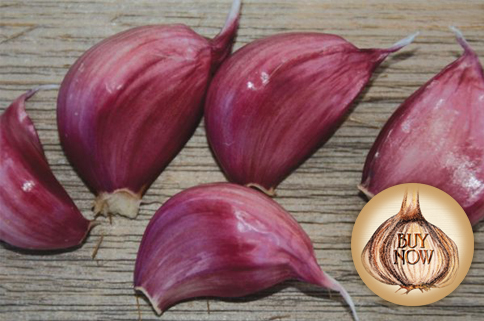 |
|
|
|
|
We know that wild garlic originally grew in some of the coldest, least hospitable climates on earth. We also know that prolonged exposure to cold, known as vernalization, is necessary for garlic to bulb. However, over the eons since garlic began to be cultivated, some strains of garlic have developed that do well in climates with mild winters. These garlics are known as Creole Garlics for the most part, but there are also a few garlic cultivars that flourish in mild climates that are not Creoles.
The Creole Garlic Group, in addition to flourishing in warm climates also tolerates spring heat spells and drought quite well. This Group was originally known as Southern Continental and referred to Southern Europe. In fact, most of the cultivars available in the US came originally from Spain. In the southwestern US, Creoles are often referred to as ‘Mexican Purple’.
Creoles are not well known in the US and quite difficult to find. The bulbs tend to be small- to medium-sized, but the flavor is usually outstanding and the Creoles are known for their long storage capabilities. We have found that Creoles can survive a Hardiness Zone 4 winter, but the bulbs are often quite small. They do very well in Hardiness Zones 5-9.
Creole Red (pictured above) is considered to be one of the best tasting Creoles available today. The bulbs have white wrappers, but the cloves are wrapped in stunning burgundy. As you can see from the photo, the color is intense.
Creole Red was introduced to the American market in the 1980s from a California virus-free program. |
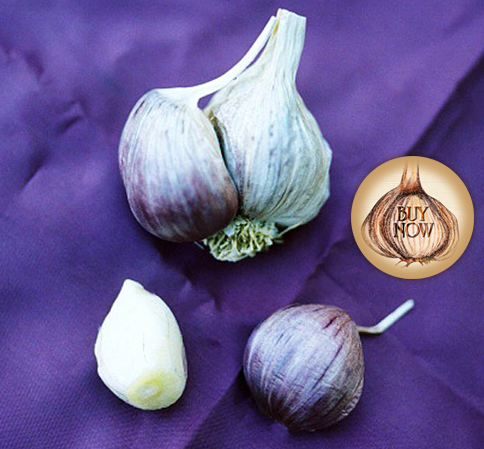 |
|
|
Don’t miss out on Garlic Bulbs. Buy now!
|
Burgundy, like Creole Red, is a beautiful Creole Garlic that came from the UC Davis Collection and was grown for commercial production by famed Oregon garlic grower, Horace Shaw. Its flavor is less intense than other Creoles, but its delicious sweetness makes it an excellent choice for mild winter climates.
Besides being a good storer, this garlic is very reliable. Year after year, you can depend upon it to produce. |
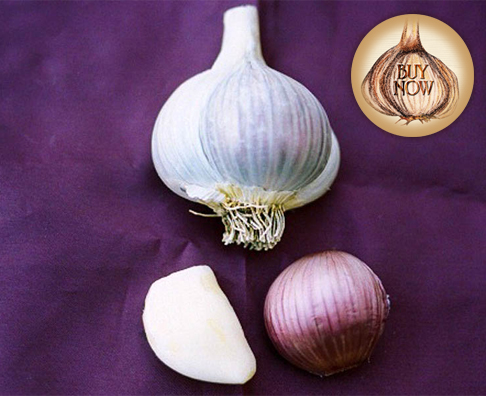 |
|
|
|
|
Ajo Rojo is a Creole for Northern climates. It flourishes in the hot South, but also does well in the North. Like other Creoles, it stores well. In fact, some say the flavors improve with long term storage.
In the early 1990s, it was brought into the US from Spain by G. Lutovsky. It began to be commercially cultivated in Nevada through a virus-free program. Its flavor soon made it a favorite among garlic aficionados.
When eaten raw, this garlic starts out mild, but builds to an intense heat. When baked, Ajo Rojo is mild and creamy. |
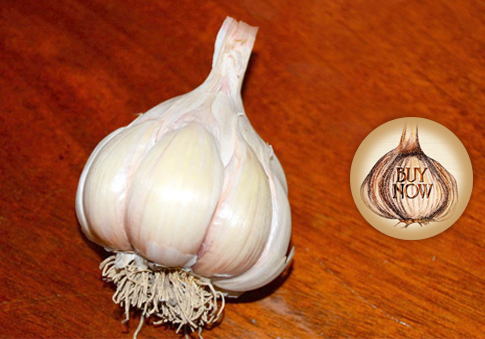 |
|
|
|
|
I find this garlic fascinating. I love to tell people, “Mild French is not mild, and it is not French.” It was developed by a much beloved Texas nursery, Porter & Sons, in the 1990s to be a warm climate garlic and they were successful.
The flavor is quite hot and when grown in the North becomes intensely hot. The plants are much larger than most Silverskins and so should be planted farther apart (6-7 inches between plants and 18-20 inches between rows. |
 |
|
|
|
|
| The Tuesday, August 7, 2018 newsletter will discuss the Rocambole Garlics, the most widely grown of the heirloom garlics. All of the garlic varieties discussed in this newsletter are available on our website. We sell out of garlic quickly, so if you are thinking about ordering, please do it soon. |
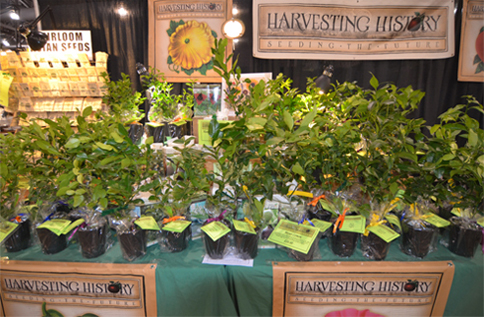 |
|
For our customers in New Jersey, New York, Delaware, Maryland and Connecticut, Harvesting History will have a booth at the New Jersey State Fair and Sussex County Horse Show from August 2- August 12. Come visit us and see what a real old fashion state fair is really like. This is a truly wonderful state fair.
|
|
Celebrate your uniquely American horticultural heritage
Harvest Your History
Seed Your Future
https://www.harvesting-history.com
FREE SHIPPING
on orders $50 and above
Follow us on Instagram
https://www.instagram.com/harvestinghistory
|
 |
|